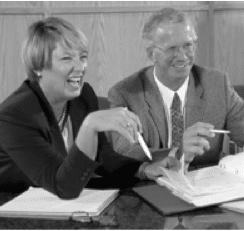Reflections after Two Years of Performance Assessment Cohorts in New Hampshire
CompetencyWorks Blog

Originally posted on September 22, 2014 for the Center for Assessment’s Reidy Interactive Lecture Series.
Let’s now return to the question posed in an earlier post: what have we learned about the possibility of sparking systemic implementation of performance assessment? These reflections come from the NH Performance Assessment for Competency Education (PACE) districts, as well as recent check-ins with team leads who participated in 2012 and 2013 Performance Assessment Network Cohorts. Half of these team leads reported that the work has been brought back to the rest of the school, and teachers outside of the group that attended the institutes are using performance assessments, while in other schools, QPA implementation has been more limited to the teachers who attended the institutes.
A strong, coherent vision helps people see the big picture
Administrators need to understand the big picture first and then set up the enabling conditions for the implementation to happen and the work to be sustainable. Participating in the 5-day training helps administrators develop their own instructional leadership and understanding of performance assessment. As one team leader noted, “[we] need administration to attend sessions, to show the seriousness and importance of this work, and get a solid team of committed individuals.” A recent post by a PACE district elementary principal illustrates how one district has integrated the training into their vision.
It takes time and effective structures to create a collaborative professional culture
A collaborative culture enables educators to use QPA protocols to engage in quality design, analysis, and instructional decision-making. PACE districts and 11 of the other administrators reported having Common Planning Time (CPT) built into their schedules. About half of those administrators said that the CPT was being used to specifically develop the QPA work. Two other schools that didn’t have CPT had time for the QPA group to meet to advance the work on their own. Structures provide the space, but the CPT must be used effectively. As one teacher at a PACE district school noted, “If we hadn’t done all work in the past becoming PLCs [professional learning communities], setting goals for our teams and norms, having expectations of our teammates then we wouldn’t be where we are. We couldn’t sit at a table and talk about what happens here.”
It takes time to change instruction to prepare kids for complex tasks
Depending on how much of a shift using performance assessment requires, success for integrating performance assessment also requires teachers to “grapple with what instruction needs to look like to make performance assessments possible.” This can be a shift for both teachers and students as illustrated by one PACE district teacher’s reflection:
Teacher leaders help to show what is possible
Cultivating teacher leadership helps other teachers see ways to engage in new practices. One 9 Grade ELA Teacher at a PACE high school describes an element of his practice that provides an example of leadership in the work:
Realizing and sustaining changes in teacher practice requires engaging teachers in thoughtful ways on a consistent basis. We are always learning and making adjustments that aim to maximize the reach of five days of training, though questions remain.
- How do we best support leaders in setting a clear vision?
- How do we help educators struggling with how to shift their practice sooner?
- How can we cultivate teacher leaders by engaging them in a Performance Assessment Network that offers what they need to deepen the work and share their own stories?
- How do we generate more model performance assessments and get more teachers to experience the full cycle including common scoring and using anchor papers?
School and district leaders also have a key role to play in building the capacity of their teaching staff, and creating a culture where instruction and assessment practices are grounded in the evidence of student work. States and external providers can catalyze change with policy and support for capacity building through professional development and convening cross-school networks; however it is at the local level that the real change occurs.
Laurie Gagnon is the Director of the Quality Performance Assessment Program (QPA) at the Center for Collaborative Education (CCE) in Boston, MA. Laurie is a key designer of the QPA model, which she has worked on since its inception in 2008, and she is leading the program’s expansion in her current role, which has done work in over a dozen states.
During the research phase she authored a qualitative study about learning from performance assessment entitled Ready for the Future: The Role of Performance Assessments in Shaping Graduates’ Academic, Professional, and Personal Lives. She was also a contributing author to Quality Performance Assessment: A Guide for Schools and Districts which describes the QPA process, designed to benefit the entire learning system, by always keeping student learning at the center and engaging educators in designing practices that align curriculum, instruction and assessment, based on evidence of what and how students are learning.